
Guests
- Russell Contrerasreporter for the Associated Press based in Albuquerque, New Mexico, who has been following the spate of police shootings there, along with the public’s demand for accountability.
- Nora Tachias-Anayamember of the group October 22nd Coalition to Stop Police Brutality, and participated in the Sunday protest against police shootings in Albuquerque. Her nephew, George Levi Tachias, was fatally shot by police when driving in Albuquerque in 1988.
Outrage is growing in Albuquerque, New Mexico, after the latest incident in a spate of police shootings. Video footage captured by a police helmet camera shows officers killing James Boyd, a homeless man who appeared to be surrendering to them at a campsite where he was sleeping. Boyd is seen picking up his belongings and turning away when officers deploy a flash grenade and then fire six live rounds at him from yards away. The Albuquerque Police Department has come under federal scrutiny for being involved in 37 shootings since 2010, 23 of them fatal. This week the FBI confirmed it is investigating the killing of Boyd, and the Justice Department has already been investigating the city’s police shootings for more than a year. We are joined by Russell Contreras, an Associated Press reporter who was tear-gassed while covering the Sunday protest and has been following the police shootings. We also speak to Nora Tachias-Anaya, a social justice activist whose nephew, George Levy Tachias, was fatally shot by police while driving in Albuquerque in 1988. Tachias-Anaya is a member of the October 22 Coalition To Stop Police Brutality.
Transcript
RENÉE FELTZ: We begin today’s show in Albuquerque, New Mexico, where hundreds marched over the weekend to protest a spate of deadly police shootings. The march began peacefully, lasting at least eight hours, and ended when police fired tear gas at demonstrators who blocked traffic. Albuquerque has one of the highest per capita rates of fatal police shootings in the country. In the latest incident, police killed a homeless man named James Boyd, who appeared to be surrendering to them at a campsite where he was sleeping.
AMY GOODMAN: Video from a police helmet camera shows Boyd picking up his belongings and turning away from the police, when the officers deploy a flash grenade and fire six live shots at Boyd from yards away. That’s after he picked up his belongings and appeared to turn away. Police fired beanbags and let loose a police dog on Boyd as he lay on the ground, still alive, pleading with officers not to hurt him and saying he could not move.
This is a clip from the Albuquerque police video of their encounter with James Boyd. Boyd died from his injuries the next day. After footage of the police shooting him went viral, the hacker group Anonymous called on people in Albuquerque to protest.
ANONYMOUS: Recently, a video has been released to the public which shows Albuquerque police officers murdering a man in cold blood for illegally camping. This man, which was schizophrenic, obviously had no intention of hurting these police officers. On the contrary, this man looks as if he is simply attempting to protect himself from visually fierce, militarized thugs. Whether this man had a history of crime is irrelevant. We drastically need to address the growing police state that has occupied our country. When will we say, “No more”? How many more citizens will be murdered? Naturally, the APD will attempt to label Anonymous as a terrorist organization for our demands of justice. But the question has to be asked: Who do we terrorize? Is it not the growing police state that terrorizes its own citizens?
AMY GOODMAN: On Sunday, Anonymous claimed responsibility for taking down the Albuquerque Police Department’s website for several hours.
The police department has come under federal scrutiny for being involved in 37 shootings since 2010, 23 of them fatal. This week, the FBI confirmed it’s investigating the killing of James Boyd, and the Justice Department has already been investigating the city’s police shootings for more than a year.
We invited a spokesperson from the APD, the Albuquerque Police Department, to join us on the program, but we didn’t get a response.
For more, we go to Albuquerque, New Mexico, where we’re joined by two guests at New Mexico PBS. Russell Contreras is a reporter for the Associated Press who was tear-gassed while covering Sunday’s protest and has been following the police shootings. Nora Tachias-Anaya is a social justice activist whose nephew, George Levi Tachias, was fatally shot by police while he was driving in Albuquerque in 1988. She’s a member of the October 22nd Coalition to Stop Police Brutality.
We welcome you both to Democracy Now! Russell Contreras, why don’t you begin? Talk about the protests of the last few days and the particular police incident that sparked these latest protests.
RUSSELL CONTRERAS: Well, the group purported to be Anonymous released a video last week calling for activists to take to the streets on Sunday, and they also vowed to hack the Albuquerque police websites the same day. On Sunday, around a few hundred protesters showed up in downtown, marching two miles away to the University of New Mexico, at which time, over the course of 10 to 12 hours, they marched back and forth.
Police—overall, the protest was pretty peaceful, but as the night progressed, the demonstrators got more aggressive. Some climbed—one particular person climbed a street pole. They attempted to take it down. People were very angry. They were all over the place in terms of demands. At which time, later in the evening, or in the afternoon, police in riot gear showed up. And at the evening, there were some tear-gas canisters fired a protesters by the University of New Mexico, and then again in downtown Albuquerque, when protesters showed up at the police headquarters. Over that course, it generally was peaceful, but there were interactions with demonstrators and police officers at certain spots. Police, for the most part, were restrained; they didn’t do much until the end. And what we found out later is that there were a number of 911 calls from residents. It seemed, overall, the demonstration was largely peaceful. It seemed to become a lot of anger. There were a number of protesters I talked to that said they either had family members or knew friends who were either shot by police or had been in various cases of excessive force.
This comes after we’ve had 37 shootings since 2010 and the police department going through a number of reforms. One of them is allowing—requiring officers to wear lapel cameras in all interactions with the public. This has put the—ironically, put the police under more scrutiny, because now we are seeing police action out in front of us. They often now released video of various shootings and interactions with the public, and now the public has seen how police work is done in Albuquerque.
AMY GOODMAN: I mean, that is really astounding because that is the video that we’ve been showing, and that has gone viral, of the police shooting of James Boyd. It’s video that is on the helmet of the police officer, one of the police officers involved in this killing.
RENÉE FELTZ: And last week, Police Chief—
RUSSELL CONTRERAS: Exactly.
RENÉE FELTZ: —Gorden Eden said this shooting was justified after James Boyd threatened his officers with knives, but Albuquerque Mayor Richard Berry rejected the chief’s assessment.
MAYOR RICHARD BERRY: He’s new in the chief position, but that’s no excuse. I think it’s—I think he was—you know, shouldn’t have said that. I think what we all need to do in a horrific situation like this is we need to thoroughly and comprehensively go through the process.
RENÉE FELTZ: Russell Contreras, can you talk about this reaction to the shooting from the police chief and from the mayor? This police chief is new, is that right? He was just recently selected from a nationwide search?
RUSSELL CONTRERAS: Yes, he’s only been there roughly a month, and so this was his first incident involving a police shooting. So, during his press conference, myself and another reporter asked him if he felt this shooting was justified, and he said, “Yes. Based on case law, I believe it was.” He then recanted that after the mayor said, you know, “I think he spoke too soon.” The investigation was still ongoing. After that, those remarks, the FBI announced that it was going to look into the shooting more closely. This comes as the department itself is under a Justice Department investigation, for more than a year, over alleged cases of excessive force and a number of shootings. I think this comes at a time where—because we have this video and it generated so much anger and so much criticism, that this is all the totality of the shootings since 2010 that the public is responding to.
RENÉE FELTZ: Now, Nora, I want to bring you into this conversation. Nora Tachias-Anaya, you were at the meeting last night of community members responding to this shooting and to all of the shootings, really. Can you talk about what people were discussing last night, about their reaction and some possible next steps?
NORA TACHIAS-ANAYA: Yes, we were brainstorming, trying to get something positive out of this. Basically, we were trying to list some of the demands that we’re asking, is to release the videos—most of the videos, we have never seen; please to drop charges on the protesters, because they do have a right to protest; also, to indict the officers that did the shooting.
AMY GOODMAN: Now, were you meeting with the police?
NORA TACHIAS-ANAYA: We were not meeting with the police. We were meeting with a lot of the coalitions that got together—Peace and Justice, and some Occupy were there, O22 was there, our group. And—
AMY GOODMAN: And what was your—what are your thoughts about the mayor contradicting what the new police chief said? Do you feel that he will push for a fair investigation of what has happened, not only to James Boyd, but this remarkable number, back to 2010, of 37 police shootings, 23 of which were fatal?
NORA TACHIAS-ANAYA: The mayor has just kept out of it for the last two years that I’ve been involved, never coming out to say anything. So I have very little reliability of him. I would hope that he would finally come out and say that there are things that need to be fixed.
AMY GOODMAN: Nora, you had your own experience—
NORA TACHIAS-ANAYA: These are [inaudible] that needed to be fixed a long time ago.
AMY GOODMAN: Nora Tachias-Anaya, you had your own experience, a loss in your family. Can you talk about what happened, though it was years ago?
NORA TACHIAS-ANAYA: Yes. In 1988, my nephew had just gotten out of Granada. He was in the Special Forces and 82nd Airborne. He was home for three months. He was—had a girlfriend that had gone to a party. He was at a party, and as—there was a fight that broke out. He—she had gotten shot by accident, and he carried her to his car and was driving her down Atrisco. And as he was driving her down Atrisco, the SWAT Elite shot through the window. The trajectory was right through his heart. And they both died that night. Never once did they allow us to see the body. There was never closure. There was never—
AMY GOODMAN: Was there an explanation of why they—
NORA TACHIAS-ANAYA: They never allowed us to sue.
AMY GOODMAN: Was there an explanation of why they shot your nephew dead?
NORA TACHIAS-ANAYA: Well, there was no witnesses, absolutely no witnesses. So the explanation was from what they thought might have happened.
RENÉE FELTZ: Russell Contreras, I want to ask you about the reforms that are being proposed and the police officers who would carry them out there in New Mexico. I want to read from one of your articles. You mentioned that there may be a change in how the police academy trains officers from using a reactive control model to what they call instead a “reasonableness standard model.” Can you talk about this difference and what it means and what people are saying about the officers’ ability to carry this new model out, its practicality, and whether it might be too complicated?
RUSSELL CONTRERAS: Yes, right now the state police academy has changed its training on use of deadly force. For years, the state, Albuquerque Police Department and other agencies across New Mexico have been using this model, what they call the reactive control model. This is essentially—puts police officers in a box. When someone draws a knife, they are trained, the cadets are trained, is a police officer will immediately draw a gun. Now, this old model, which is copyrighted, does not give any sort of room for an officer to use other technologies, like Tasers, like other nonlethal force. Now, this model has not been updated since 2003.
What the state police academy is attempting to do is adopt a model that has been used in other states. That means that if a suspect draws a knife, depending on where the officer is, he or she may draw a Taser, may draw a gun, may take cover. They’re basically given a number of options. This is coming at a time when state police itself was going through its own spike in police shootings, so there had been pressure amongst agencies across the state to look at and change the model.
What we’re seeing in Albuquerque is that a lot of these officers involved in various shootings were trained on this old model. Now, there has been criticism by some activists that said, “Well, this old model is actually easier for cadets to understand.” Given the fact that we do—we are in one of the poorest states in the country and that we have an educational system that is subpar compared to other states, so some activists are saying, “Well, let’s stick with this old model, because it’s easier to understand.” However, it is an attempt by law enforcement agencies to say, “Well, it’s time to update, because it doesn’t take in consideration new technology that’s now available for various officers.”
AMY GOODMAN: Russell Contreras, can you talk about the report—I think it was in The New York Times in 2012—that talked about an actual bounty, something like a thousand dollars per killing, that was given to Albuquerque police officers? Do I have that right?
RUSSELL CONTRERAS: Yeah, what would happen was that when an officer was involved in a shooting, whether it was fatal or not, the officer was placed on administrative leave. What the union would do is give the officer a certain amount of money to say, “OK, here’s some money to get out of town, go relax with your family, digest.” And what the union was arguing at the time was that the police officer was going through some traumatic experience, and so this was an attempt by the union to say, “Look, we’re looking out for you.” Since that broke, the union has pulled back on that. The officials that were involved in that are no longer with the police union. So that—it kind of told a story of what was happening in the culture of the police department. The reaction from elected officials was outrage, because they didn’t know this was going on; they weren’t involved in it. And it generally spoke to what the public was saying, was like, “Look, we need massive reform.” This was a couple of years ago. And since then, they’ve instituted a number of reforms, and that was one of the things they wanted to get rid of.
AMY GOODMAN: The piece was very dramatic in the Times, talking about Mike Gomez, who lost his son—he was unarmed—to a police shooting, and Gomez said, “You’re telling police that if you shoot somebody you’re going to get paid leave and you’re going to get $500.” He said, “If the police shoot a person they get this. What does the family get? A funeral bill,” he asks.
Can you talk about who James Boyd was, Russell? What actually happened? What is the explanation that’s been given? When we see, in the police’s own video, as he’s negotiating with police and they’re telling him to come with them, he picks up his backpack, his back turns to them, and that’s when they shoot him six times with live ammunition. As he’s on the ground, they’re telling him to drop a knife that’s in his hand. He’s face down. He’s saying, “I can’t move.” They are hitting him with bean bag, as well as a stun grenade. And then they sic a dog on him?
RUSSELL CONTRERAS: Exactly. What we know about that incident is that it was all—it was a—the shooting that we see now in the video that’s gone viral was the end of a long standoff in the Sandia Mountains, in the foothills. When he was approached by some officers—they’re called Open Space officers—they approached him, and they—you know, they basically were trying to talk to him and said, “You were camping illegally.”
On video that was shown prior to that, that we obtained, that the police released, is that officers were attempting to frisk him, and then he pulls out a knife. And then the officers, at the time, who confronted him, at first, just pulled out Tasers. This confrontation went on for hours. According to police, he asked for a state police officer liaison. James Boyd also said that he was a federal agent. It seemed like the officers were very concerned about his mental health. So they called in some crisis management officers to come in.
What police say is that during the standoff he threatened to kill a number of officers, whether it was state police or Albuquerque police. And so, when we see the tail end, even though he was surrendering, officers say that, based on what they knew, is that he had threatened officers. And the police chief said, “Well, this was a result of a number of threats, and so this is what happened at the end.” Now, despite that, authorities do say, yeah, that there may have been some problems with the shooting, and that’s why it’s under investigation now. But in general, it was a long standoff. We don’t see a lot of the video, but there was a lot of going back and forth with Mr. Boyd and various officers.
AMY GOODMAN: Of course, what counts is what happened at the end, you know, as they were talking this thing through, is those moments. He was far from them, picking up his backpack, his back turned to them as then they shoot him.
Russell Contreras, we want to thank you for being with us, AP reporter. Nora Tachias-Anaya, thank you, as well, member of the October 22nd Coalition to Stop Police Brutality. Her nephew, George Levi Tachias, who was in the special forces in Granada, back in New Mexico, fatally shot by police when driving in Albuquerque in 1988.
This is Democracy Now! We have that video, the police video of the shooting of James Boyd, on our website at democracynow.org. When we come back, we’re going to look at the growing movement to reform prisons in this country, particularly solitary confinement, after a prisoner at Rikers Island who was in solitary confinement died. Stay with us.

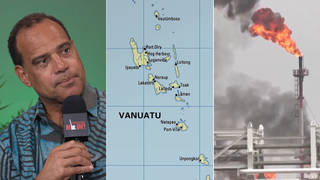
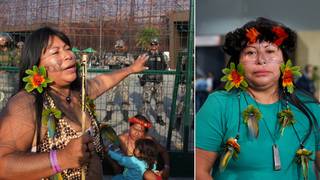
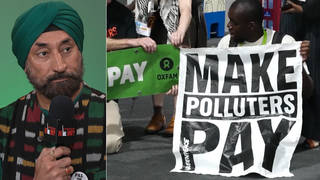






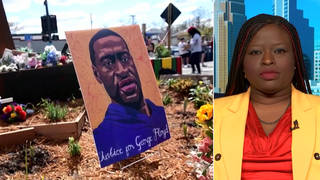
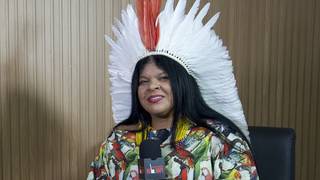
Media Options